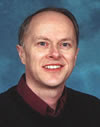Did this
composer experience her own dream, after she read about the one her ancient
predecessor envisioned (see picture here of Jacob’s dream)? Or, maybe it was
just the reading of the story in Genesis that spurred Sarah Flower Adams’
imagination, so that she thought of being “Nearer, My God, to Thee” and spoke
to Him in five verses about how she felt. (The hymn’s theme also touched
another composer, Edward H. Bickersteth, Jr., who wrote a rarely heard sixth
verse after Sarah’s original five were published.) She may have been pondering
her life’s challenges as she reached out to Him with this prayer-song, a not
uncommon posture to take when conversing with the Almighty. After all, who else
can one count on to listen and respond except the Creator, the One who can
solve my troubles?
It was
1840, and 35-year-old Sarah Adams and her sister Eliza were collaborating with their
church’s minister on a hymnal project in London, an assignment that had Sarah
perhaps looking backward as well as forward. She’d wanted to be an actress, and
had at least one great moment on the stage, at least until poor health forced a
change in her outlook just a few years earlier. Her sister’s frail health must
have been on her mind at times too – Eliza would die from tuberculosis just five
years later. So, Sarah had steered her life into writing, abandoning a thespian
career for the pen she could more easily wield. The sisters were in the midst
of the hymnal’s compilation when their minister-collaborator coaxed their involvement
in capping his next week’s sermon with a brand new hymn. The subject was the
episode that found Jacob sleeping with a stone pillow and dreaming of an angel
staircase (Genesis 28:10-22). Who could imagine being able to sleep with a
stone headrest? And, would that discomfort inspire dreaming, a slumber
indicative of an especially deep rest? Perhaps it was God’s promise of his
future that secured Jacob’s mind as he lay under the stars, drawing for him the
angelic portrait in his mind. Were Sarah’s burdens -- a ‘cross’ (v.1), being a ‘wanderer’
(v.2), and ‘griefs’ (v. 4) – lightened as she considered how Jacob’s experience
spoke to her? It’s said that songwriting
can be therapeutic, a method of managing one’s stress points.
What
would I do if I really did encounter God, or one of His messengers, in a
visible, memorable, and riveting way? Maybe ‘riveting’ comes closest to
describing how I’d react, for most biblical accounts of humans meeting God or
an angel face-to-face convey this – the encounter freezes the human in fear. God
Himself says don’t look, or you’ll die (Exodus 33:20). With this in mind, how
is it Sarah wanted to draw near to Him? Wasn’t’ she afraid? Did she notice that
Jacob had been, too (Gen. 28:17)? Yet, he didn’t cower. It seems the experience
does leave the follower frightened, but yet mesmerized and intrigued too. If He
shows me a dream, could He in fact want more than fear from me? Could He want intimacy,
too? Maybe that relationship urge I have in my life is less human, and more God,
than I thought.
See more
information on the song story in these sources: The Complete Book of
Hymns – Inspiring Stories About 600 Hymns and Praise Songs by William J.
Petersen and Ardythe Petersen, Tyndale House Publishers, 2006; Amazing
Grace: 366 Inspiring Hymn Stories for Daily Devotions by Kenneth W. Osbeck,
Kregel Publications, 1990; 101 Hymn Stories, by Kenneth W. Osbeck,
Kregel Publications, 1985; and Then Sings My Soul – 150 of the World’s
Greatest Hymn Stories, Robert J. Morgan, Thomas Nelson Publishers, 2003.
Also see the composer’s brief biography here: http://www.hymntime.com/tch/bio/a/d/a/adams_sff.htm
Also see this link, showing all six original
verses: http://www.hymntime.com/tch/htm/n/m/g/nmgtthee.htm




